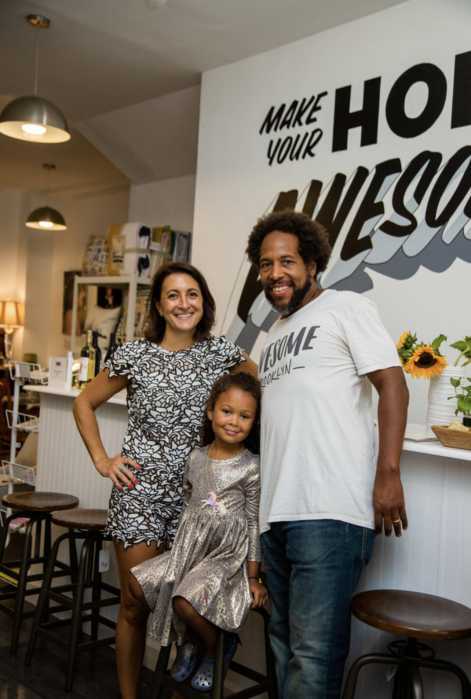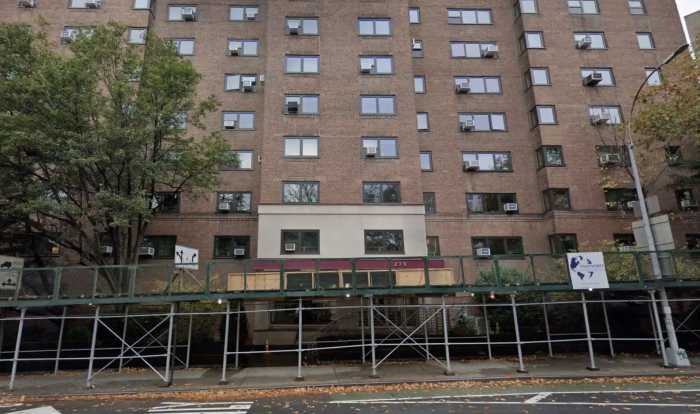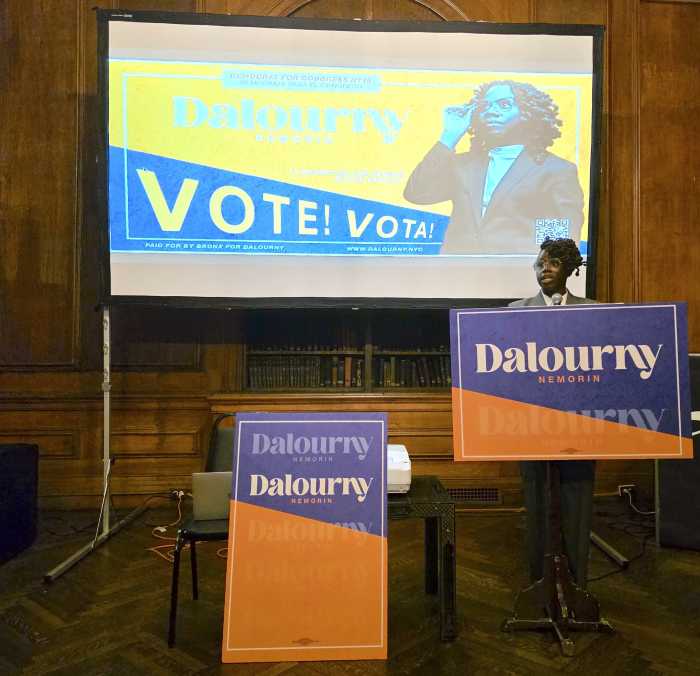When SAGE — Advocacy and Services for LGBT Seniors — held a ribbon-cutting ceremony on December 17 to open the city’s first LGBTQ-friendly affordable senior housing facility, Brooklyn Borough President Eric Adams caught the audience by surprise with some heated words raising questions about the project’s commitment to diversity and inclusion on property shared with NYCHA’s Ingersoll Houses.
Despite Adams’ unrestrained rhetoric — which made reference to rodents in the NYCHA buildings and “beautiful floors” in the new Stonewall House, to the potential for “disruptive” “incidents,” and even to “arrogance” and to slavery — his comments, which were recorded, did not surface in the media until the New York Post reported them on Christmas Day, more than a week after he uttered them.
Once the comments, which the Post characterized as “a bizarre and incendiary rant,” surfaced, Adams moved to clarify what his concerns were — and several times underscored that he was not indifferent to the needs of LGBTQ seniors.
Though his office did not respond to Gay City News’ December 26 request for comment, the same day he told Gothamist.com, “We should pull people from the community… The expectation is not to build two cities within NYCHA.”
On Twitter, the borough president explained, “As I walked into the Stonewall House ribbon cutting, several community residents voiced their concerns to me over a nice building built on NYCHA property while their public housing remains neglected. They also shared the desire to see a greater share of LGBTQ+ people of color. The number one crisis in the community where Stonewall House sits is affordable housing and gentrification. I want all of our friends and allies to hear this and be part of the solution. We worked together on marriage equality, on raising the age for RHY [Runaway and Homeless Youth] youth. We must do so on this too.”
All of these goals — and most especially the responsibility of the LGBTQ community to work in coalition with communities of color and economically disadvantaged New Yorkers — are laudable.
The problem with Adams’ critique — leaving aside his intemperate tone at a moment when several hundred new residents were arriving at Stonewall House — is that all of his goals reflect values that SAGE worked hard and successfully to honor.
Though the building is designed to be affirming for LGBTQ seniors and provide them, and other residents and neighbors, with appropriate social services, there is no requirement that residents identify that way — and SAGE estimates that less than 60 percent do so.
All of the residents must meet the requirement that their incomes not exceed 50 percent of the area’s median income, so the building is fully affordable and serves New Yorkers of limited means. More than three-quarters of the new arrivals at Stonewall House are people of color, 25 percent of the 145 units were set aside for New Yorkers who have experienced homelessness, and an additional 54 were reserved for NYCHA residents or those on the waiting list for public housing. The social services provided at the SAGE Center on the building’s first floor — again, though they are intended to be affirming of the LGBTQ residents — are available to all those who live at Stonewall House as well as to residents from the neighboring community.
Adams may quibble with the NYCHA/ homeless set-aside percentages — though they certainly seem reasonable, accounting for 62 percent of all units — but he has been in the loop as this project developed over several years and certainly could have pressed that point earlier.
To suggest, however, that the demographics of Stonewall House and those of the Ingersoll Houses in some meaningful way represent “two cities” is simply not an accurate description of this picture. And it is ridiculous to assert that “beautiful floors” in a new construction building for low-income seniors represent gentrification in Fort Greene.
Plenty of luxury buildings in and near Fort Greene have sprouted up in the years that Adams has served as borough president — and that gentrification and the attendant displacement should cause concern. So too should the inexcusable neglect of NYCHA, which has allowed dangerously unhealthy conditions to persist for too many public housing residents.
But Stonewall House is not part of those problems. In fact, it is part of the solution — admittedly a small one, with only 145 units, but it definitely points in the right direction.
SAGE’s initiative in Fort Greene and another one ready to go online early in 2020 in the East Tremont section of the Bronx are not the nation’s first LGBTQ-friendly senior housing developments. The two projects, however, distinguish themselves from their predecessors in other cities that were typically sited in their “gayborhoods,” largely white, relatively affluent communities like Chelsea. SAGE recognized that the greatest need for affordable housing among LGBTQ seniors is in lower income communities where people of color predominate. As a result, its first two initiatives are not in Manhattan, but rather Brooklyn and the Bronx.
Fort Greene, of course, has undergone tremendous gentrification dating back to the 1990s, but is still home to many people of color. With Stonewall House, SAGE has made an incremental contribution to affordable housing for seniors in the neighborhood, and the beneficiaries are overwhelmingly people of color.
Adams did work enthusiastically with the LGBTQ community to champion marriage equality and he did push to provide appropriate housing for homeless young adults, many of them queer. For some reason, he now seems to see a need to question whether SAGE is living up to its end of the bargain in working in coalition — and in comments quoted in KingsCountyPolitics.com, City Councilmember Laurie Cumbo also sounds skeptical on that score. But those doubts do not square with the reality of the project that SAGE has created.
“Beautiful floors” might well disconcert neighbors who worry about lead paint and rodents, but Adams, Cumbo, and other local elected officials have all the facts at their disposal to address unfounded rumors that Stonewall House is somehow a gentrified incursion into the Ingersoll Houses community. Their job is to lead and to acknowledge that the coalition that won marriage equality still holds — and has moved on to more daunting challenges affecting the most vulnerable seniors among us.

















